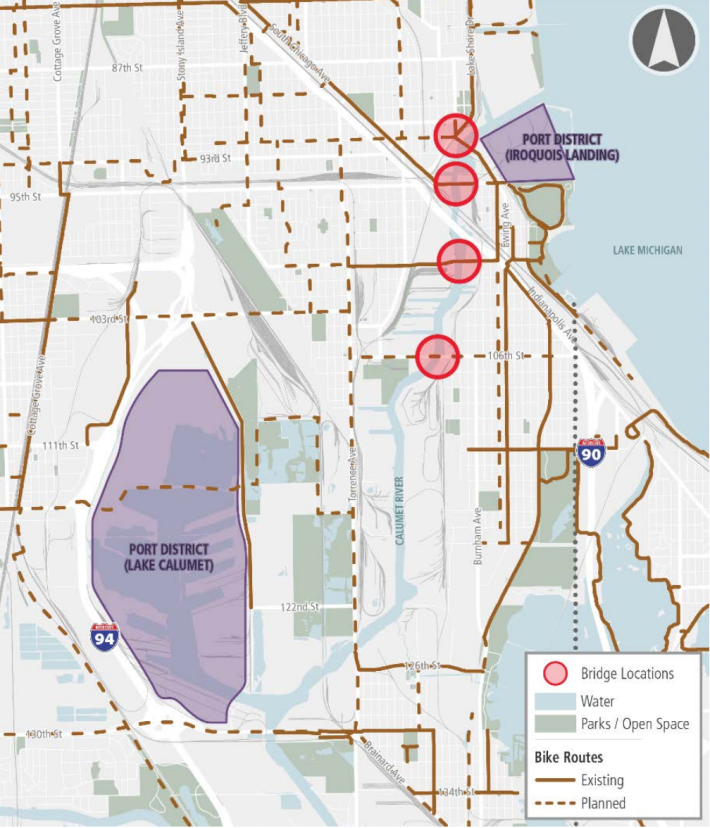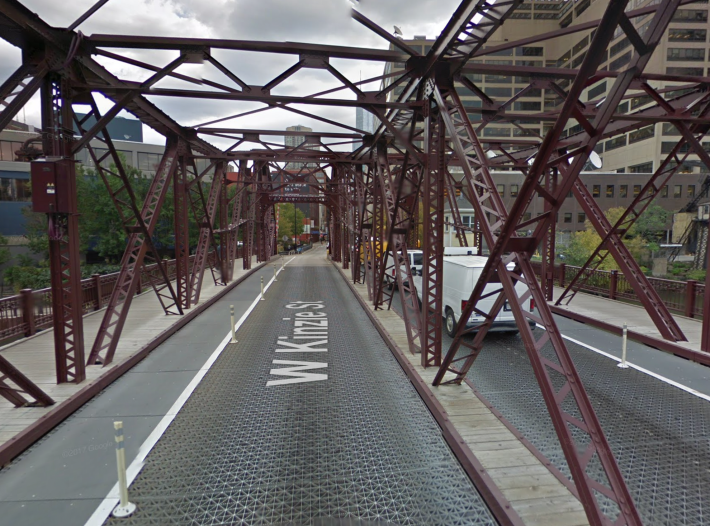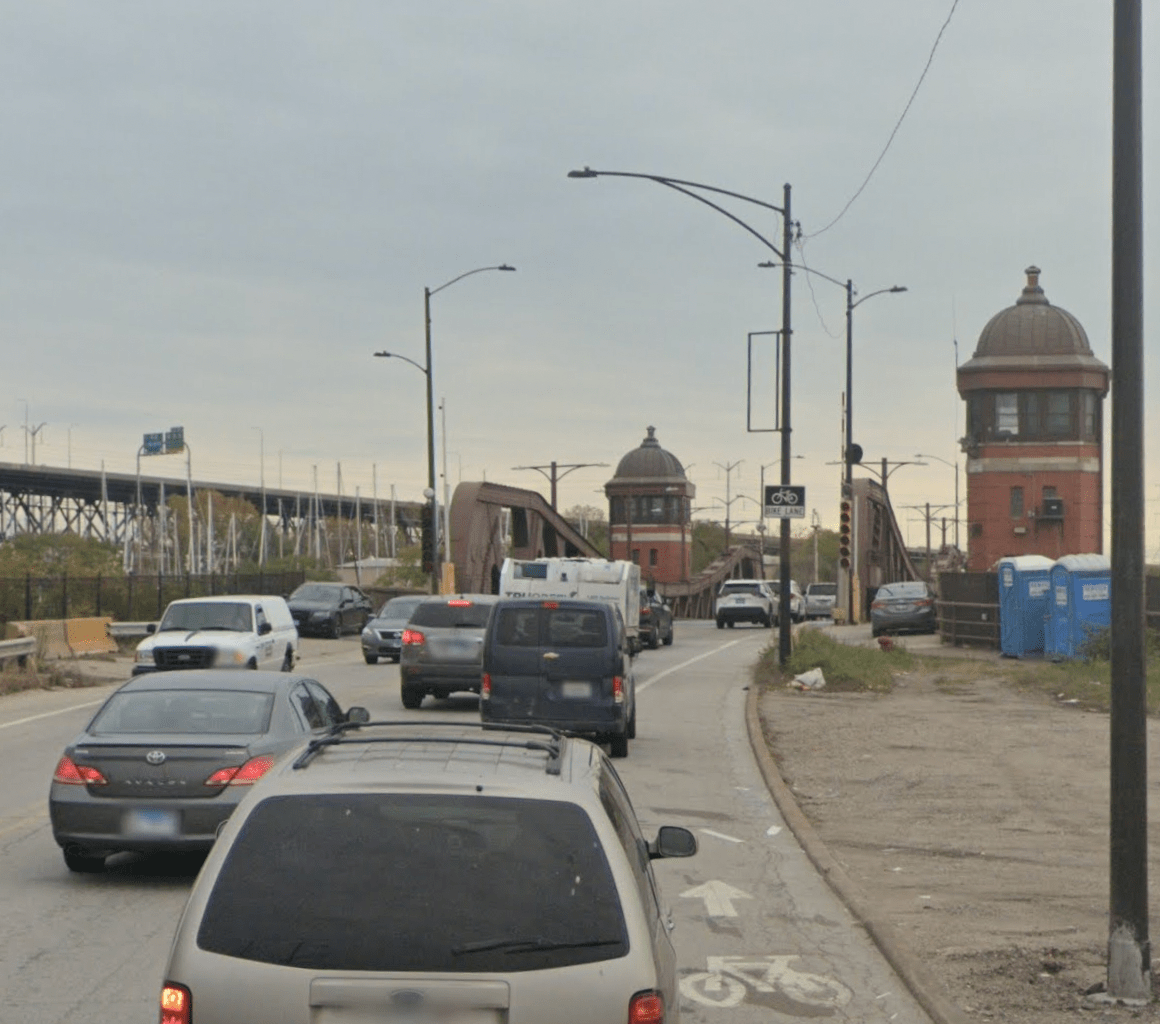Chicago's Southeast Side is slated to become a little more pedestrian- and bike-friendly thanks to an upcoming Calumet River bridge rehabilitation project funded by $144 million in federal dollars.
Vice President Kamala Harris joined Mayor Lori Lightfoot and U.S. Senator Dick Durbin (D-IL) to announce the rehab of four Illinois International Port District bascule bridges at a presser under the 95th Street Bridge. (That's the ones the Blues Brothers jumped in their car in the eponymous movie.) The federal cash is coming from the U.S. Department of Transportation’s new Bridge Investment Program, which was created by the $1.2 trillion Bipartisan Infrastructure Law.
WATCH LIVE: Mayor Lightfoot joins Vice President Harris and other federal leaders to highlight investments made through the Bipartisan Infrastructure Law.
— Archived: Mayor Lori E. Lightfoot (@mayorlightfoot) January 4, 2023
https://t.co/VkUIpek3rK
“It is my honor for Chicago to be one of the first grant recipients of the new Bridge Investment Program’s Large Bridge Project Grants,” said Lightfoot in a statement. “These bridges are an important part of our city’s history, and they must be modernized to ensure they can meet the demands of the future.”
“The benefits of rehabbing the four aging Calumet Bridges are wide-ranging for the entire region and surrounding areas,” Durbin stated. “These bridges connect our communities, get residents where they need to go and keep cargo moving through the Illinois International Port.”
The federal money will help pay for the 92nd Street/Ewing Avenue Bridge, 95th Street Bridge, 100th Street Bridge, and 106th Street Bridge. According to the city, each of these moveable bridges lifts an average of 5,000 times per year to accommodate shipping traffic. The spans carry a combined average of more than 40,000 motor vehicles per day, including 3,000 trucks.
Sidewalk upgrades are planned, including the installation of almost 3,000 feet of new sidewalk to close gaps on both sides of the 100th Street bridge. According to a Chicago Department of Transportation report on the project, all four bridges have sidewalks on both sides of the span itself. "However, there are deficiencies and gaps in the sidewalk network on the approaches to some of the bridges that result in pedestrians having to walk on shoulders or uneven parkways."

Bike improvements are also in the works. As it stands, the 92nd Street bridge has "shared lane markings" (bike-and-chevron symbols also known as "sharrows") and the 95th Street and 100th Street bridges have non-protected, paint-only bike lanes, but the 106th Street bridge has no bike facilities at all. As part of the bridge rehab, bike lanes will be added to all the bridges.
"Each of the bridges and approaches will be evaluated for the potential for barrier separated bike lanes (on the approach) and flexible delineators (on the bridge), as space permits," the CDOT report states. Concrete infill will be added to the existing open metal grating along the bike lanes over the bridge, for a safer, less slippery riding surface.

Since the flexible bollards CDOT has used on other bridges, such as Kinzie Street in River North, are quickly obliterated by drivers, it would obviously be much better if concrete curbs could be used on these spans. As bike advocates are quick to point out, paint and flimsy plastic posts are not protection. Bridge rebuilds like this happen once in a generation, so it would be a shame to miss the opportunity to create a truly bike-safe structure.






